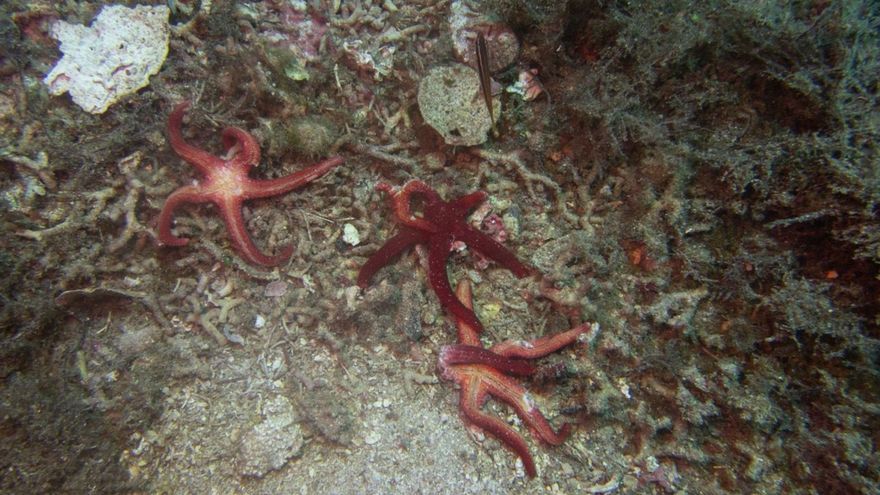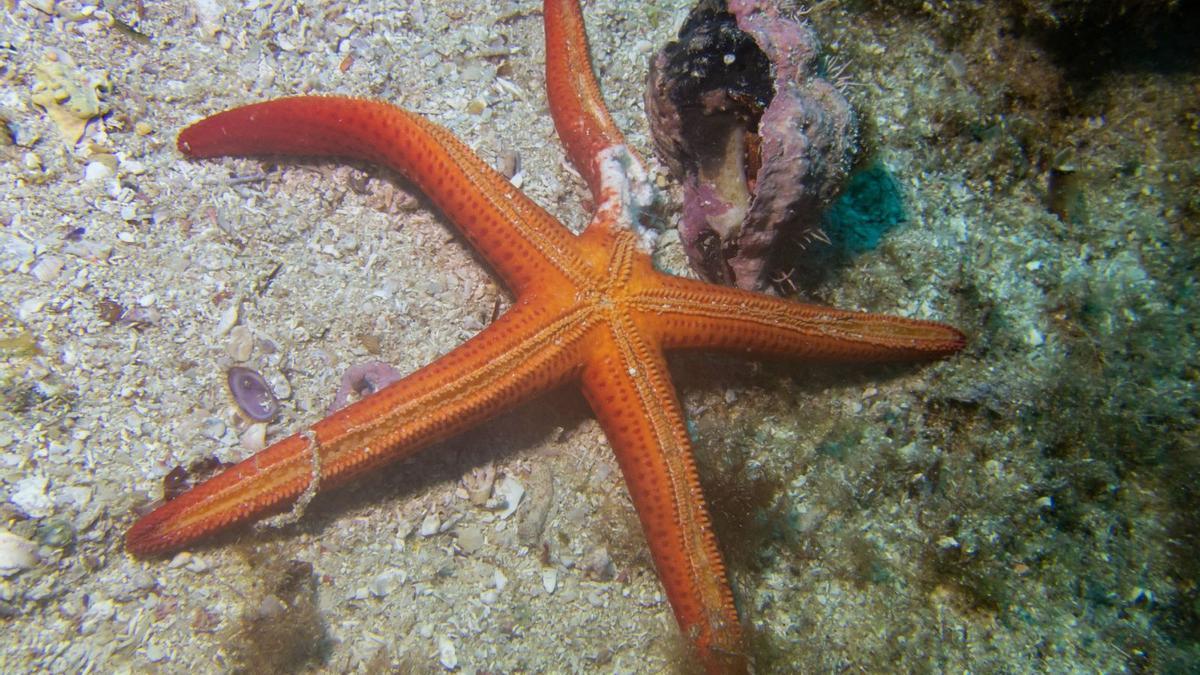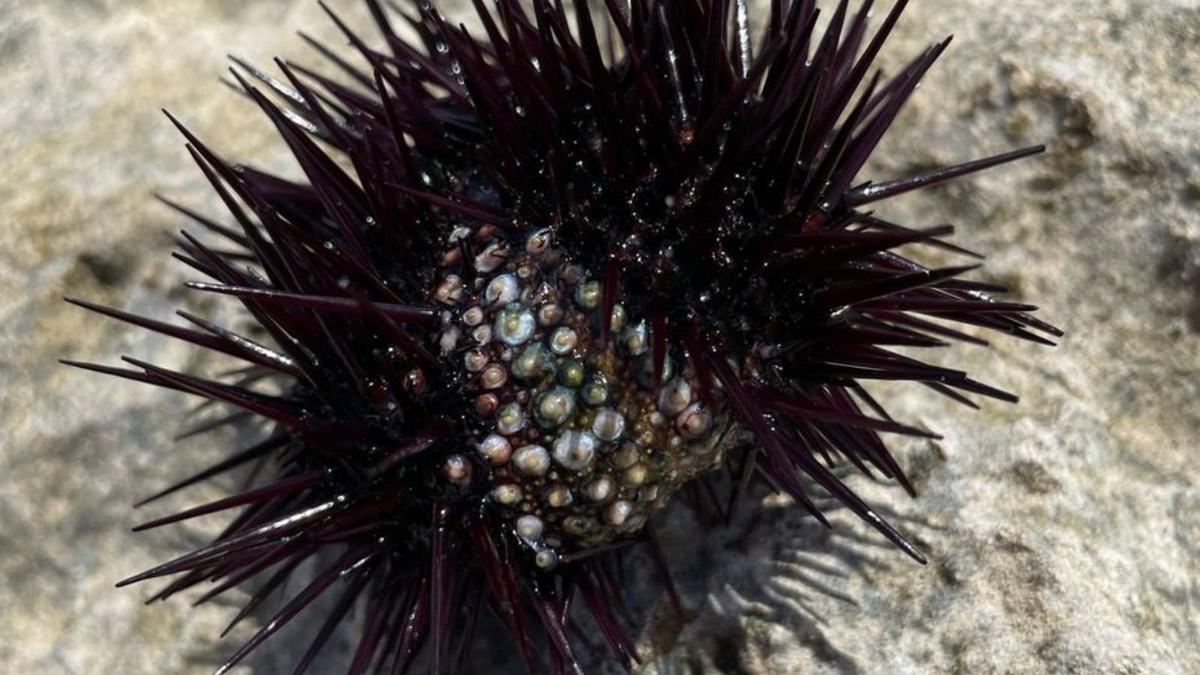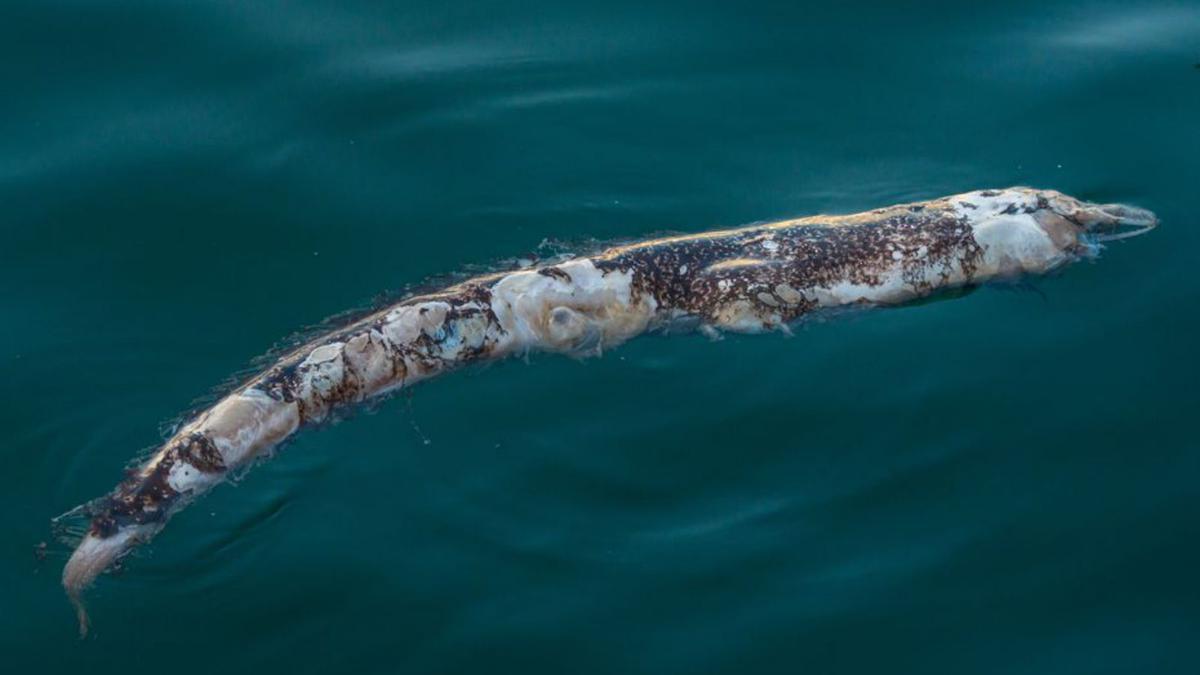Between 15 and 20 meters deep, in Pitiusas waters, the dive computer has marked 29 degrees for almost the whole month of August. At the surface it has reached 30 degrees, a temperature that has been maintained even at 10 meters, and only after the storms at the end of the month, the temperature has dropped one degree. It is the marine equivalent of a fire. And it had to have consequences. The Mediterranean moray eel – a fish that in 2018 was already the protagonist of a serious mortality episode -, at least three species of starfish and two species of sea urchins are the organisms in which this year an unusual mortality has been detected that could be due to a combination between the high temperature and the action of some pathogens, viruses or bacteria, which can become more virulent in a sea that is not very resilient.
During the first days of August in the islets of ses Bledes, s’Espartar and sa Conillera it became evident that something was happening; in each dive more than ten dead stars could be observed, a totally unusual number. And all the specimens found were initially of the species Hacelia attenuata, the smooth starfish. Many of them appeared upside down, decomposing, as if they had fallen from the walls to which they once clung. Many already had scavengers such as hermit crabs on them and most were between 10 and 18 meters deep. And that means that they were above the thermocline (the thermal barrier beyond which the water temperature remains cold), as this has been at about 20/21 meters for almost the entire summer and only dropped in September.
What was happening in the illots de Ponent was communicated to the technicians of the reserves and experts in marine biology and echinoderms such as Joaquim Garrabou and Xavier Turon, from the Institut de Ciències del Mar and the Centre d’Estudis Avançats de Blanes (CSIC centers), respectively, were consulted. These experts already ventured to stress the high probability that it was a mass mortality event due to the extremely high temperatures. “It could be a pathogen, but surely its extension is related to the increase in temperature,” pointed out Xavier Turon, who explained that, recently, in the Pacific, a mortality of stars attributed to an unknown disease but aggravated by the temperature has been detected. Joaquim Garrabou pointed out that information had been received from different parts of the Balearic Islands, Sardinia and the French coast with observations of species mortalities that could be related to the fact that “this year the temperatures are breaking many records”. The biologist, coordinator of Observadores del Mar, added that this citizen science platform is being adapted to expand the Atención Corales project (which collects data on coral species affected by climate change) to other groups that will be affected by massive mortalities as heat waves continue to increase. Citizen observations are very important to be able to detect such events.
The urchin bald spot disease probably caused by high temperatures
And while smooth starfish were dying in the depths, biologist Samuel Pinya was also observing unusual mortalities of various species at shallower depths, during the work he has been doing in the Pitiusas for the Coastal Health Monitoring Scheme project, for the Iberostar Sea Chair of the UIB, to monitor the populations of the benthos (the bottom communities) of the islands.
For the full article, please visit Diario de Ibiza website here.


 Dead starfish in s’Espartar. | CAT
Dead starfish in s’Espartar. | CAT This sea urchin shows the characteristic bald spot of the disease. S. Pinya
This sea urchin shows the characteristic bald spot of the disease. S. Pinya 223 moray eels were found dead in 2018. CAT
223 moray eels were found dead in 2018. CAT